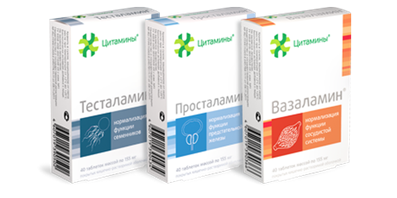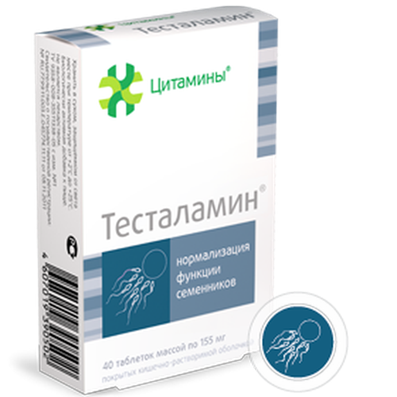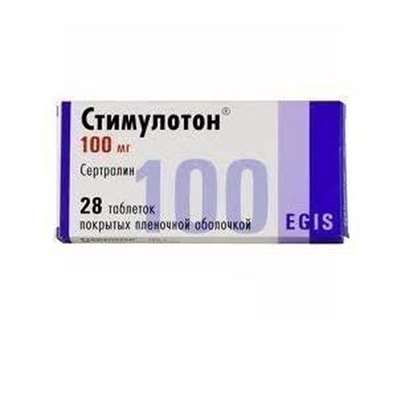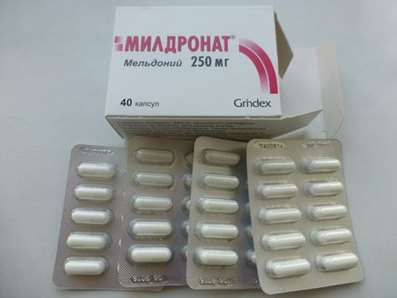Instruction for use: Sibazon
I want this, give me price
Active substance: Diazepam*
ATX
N05BA01 Diazepam
Pharmacological group:
Anxiolytics
The nosological classification (ICD-10)
A35 Other forms of tetanus: Tetanus local; Tetanus; Muscle spasms in tetanus; Clostridiosis wounded; Tetanus; Hydrophobia (hydrophobia)
F10.3 Abstinence: Alcohol withdrawal syndrome; Abstinence syndrome; Abstinence syndrome with alcoholism; Abstinence; Alcohol abstinence; Alcohol withdrawal status; Alcohol abstinence syndrome; Postabstinctive disorder; Postabstinent condition; Hangover syndrome; Abstinence syndrome; Alcohol withdrawal syndrome; Abstinence condition
F41.9 Unspecified anxiety disorder: Neurotic disorders with anxiety syndrome; Severe anxiety; Neurosis-like symptoms; Neuro-like disorders; Neuro-like conditions; Neuroses with anxiety symptoms; Neuroses with a sense of anxiety; Acute situational and stress anxiety; Acute attack of anxiety; Abrupt anxiety; Situational Anxiety Disorder; State of anxiety; Anxious-delirious component; Alarming state; Anxiety; Anxiety Disorders; Anxiety syndrome; Sense of anxiety; Alarm states; Chronic neurotic anxiety; Susto; Psychopathy with a predominance of anxiety and anxiety; Anxiety disorders in neurotic and neurosis-like states; Anxious neuroses; Anxious and delusional state; Acute situational stress alarm; Depressed mood with elements of anxiety
F48.9 Neurotic disorder, unspecified: Neurosis; Secondary neurotic symptom; Other neurotic conditions; Neurosis with increased irritability; Neuroses; Neuroses of all kinds; Neuroses with retardation; Neuroses of the heart; Neurotic disorders in alcoholism; Neurotic disorders with retardation; Neurotic disorders with anxiety syndrome; Neurotic reactions; Neurotic symptoms with alcoholism; Neurotic states; Neurotic syndrome; Neurotic disorder; Attack of neurological dysfunction; School neurosis; Emotional Stress
G24.8.0 * Hypertonus muscular: Increased muscle tone; Increased muscle tone; Spasm of striated muscle due to organic diseases of the central nervous system; Spasticity of muscles; Painful muscle spasms in diseases of the spine; Increased skeletal muscle tone
G80.0 Spastic Cerebral Palsy: Little's Disease; Spastic Pallas; Little disease
I10 Essential (primary) hypertension: Arterial hypertension; Arterial hypertension; Arterial hypertension of the crisis current; Hypertension essential; Essential arterial hypertension; Essential arterial hypertension; Essential hypertension; Essential hypertension; Primary arterial hypertension; Arterial hypertension complicated by diabetes mellitus; Arterial hypertension; Sudden increase in blood pressure; Hypertensive circulatory disorder; Hypertensive state; Hypertensive crises; Hypertension; Hypertension arterial; Hypertension malignant; Hypertonic disease; Hypertensive Crises; Hypertensive crisis; Malignant hypertension; Hypertensive Crisis; Exacerbation of essential hypertension; Transient arterial hypertension; Isolated systolic hypertension
I15 Secondary Hypertension: Arterial hypertension complicated by diabetes mellitus; Arterial hypertension; Sudden increase in blood pressure; Hypertensive circulatory disorder; Hypertensive state; Hypertensive crises; Hypertension; Hypertension arterial; Hypertension malignant; Hypertensive Crises; Hypertensive crisis; Hypertension; Malignant hypertension; Hypertensive Crisis; Exacerbation of essential hypertension; Transient arterial hypertension; Arterial hypertension; Arterial hypertension of the crisis current; Vasorenal hypertension; Hypertension symptomatic; Renal Hypertension; Renovascular hypertension; Renovascular hypertension; Symptomatic arterial hypertension
I73.9 Peripheral vascular disease, unspecified: Angiospasm; Vasospasm / vasoconstriction; Vasospastic disorders; Violation of venous microcirculation; Disturbance of blood circulation; Violation of peripheral circulation; Insufficiency of peripheral circulation in the lower and upper extremities; Occlusion disease of peripheral arteries; Occlusion disease of peripheral arteries in stages III-IV of Fontaine; Peripheral vascular insufficiency; Peripheral vascular lesions; Peripheral vascular disorder; Peripheral blood circulation disorder; Arthritis spasm; Vascular spasm; Functional lesions of peripheral arteries; Chronic obliterating endarteritis; Chronic obliterating disease of the vessels of the lower extremities; Chronic occlusive disease of the arteries
L29 Itching: Itching with partial obstruction of the biliary tract; Dermatitis itchy; Dermatosis with persistent itching; Other itching dermatoses; Itching dermatoses; Itching allergic dermatosis; Itching dermatitis; Itching dermatosis; Itchy skin; Excruciating itching; Severe itching; Endogenous itching; Skin itching with dermatosis; Restricted itchy dermatitis; Itching of the skin; Itchy scalp; Itching eczema
N94.3 Premenstrual tension syndrome: Pronounced premenstrual syndrome; Menstrual psychosomatic disorder; Menstrual syndrome; Premenstrual tension; Premenstrual status; Premenstrual period; Premenstrual syndrome; Menstruation syndrome
N95.1 Menopausal and climacteric conditions in women: Atrophy of the mucous membrane of the lower sections of the genito-urinary tract caused by estrogen deficiency; Vaginal dryness; Vegetative disorders in women; Hypoestrogenic conditions; Estrogen deficiency in women in menopause; Dystrophic change in the mucous membrane in menopause; Natural menopause; Intact uterus; Climax; Men's Climax; Menopause in women; Menopause Depression; Menopause dysfunction; Climacteric neurosis; Menopause; The climacteric period complicated by psycho-vegetative symptoms; Menopausal Symptom Complex; Climacteric vegetative disorder; Climacteric psychosomatic disorder; Menopause in women; Menopausal vascular disorder; Menopausal vasomotor symptoms; Insufficiency of estrogens; Feeling of heat; Pathological menopause; Perimenopause; Menopause Period; Post-menopausal period; The postmenopausal period; Postmenopausal period; Premature menopause; Premenopause; Premenopausal period; Tides; Hot flushes; Blood flashes to the face in meno- and post-menopause; Hot flushes / sensations in menopause; Heartbeat during menopause; Early menopause in women; Disorders in menopause; Menopause syndrome; Vascular complications of climacteric period; Physiological menopause; Estrogen-deficient conditions; Menopause premature
R25.2 Cramp and spasm: Muscle spasms in tetanus; Pain syndrome with smooth muscle spasms; Pain syndrome with smooth muscle spasms (renal and biliary colic, intestinal spasm, dysmenorrhea); Pain syndrome with spasms of smooth muscles of internal organs; Pain syndrome with spasms of smooth muscles of internal organs (renal and biliary colic, intestinal spasm, dysmenorrhea); Painful muscular spasm; Mimic spasms; Muscular spasticity; Muscle spasms; Muscular spasms of central origin; Muscular spasticity; Muscle spasm; Neurological contractures with spasms; Night cramps in the extremities; Nocturnal cramps in the legs; Night cramps calf muscles; Symptomatic convulsive state; Vesta Syndrome; Spasm of smooth muscles; Spasm of smooth vascular musculature; Spasm of muscles; Spasm of striated muscle due to organic diseases of the central nervous system; Spasms of smooth muscles of internal organs; Muscle Cramps; Skeletal Muscle Cramps; Spastic states of the striated musculature; Spasmodic pain syndrome; The spastic condition of smooth muscles; Spasticity of skeletal musculature; Muscle cramp; Convulsions; Cramps of the calf muscles ; Convulsions of central origin; Convulsive condition; Convulsive Syndrome; Convulsive status in children; Tonic convulsions; Cerebral spastic syndrome; The phenomenon of a folding knife
R25.8 Other and unspecified abnormal involuntary movements: Athetosis; Movement disorders
R45.1 Anxiety and agitation: Agitation; Anxiety; Explosive excitability; Internal stimulation; Excitability; Excitation; Excitation acute; Psychomotor agitation; Hyperexcitability; Motor excitement; Cessation of psychomotor agitation; Nervous excitement; Restlessness; Night trouble; Acute stage of schizophrenia with excitation; Acute mental agitation; Paroxysm of excitation; Overexcitation; Increased excitability; Increased nervous excitability; Increased emotional and cardiac excitability; Increased agitation; Mental arousal; Psychomotor agitation; Psychomotor agitation in psychoses; Psychomotor agitation of an epileptic nature; Psychomotor paroxysm; Psychomotor fit; Symptoms of Excitation; Symptoms of psychomotor agitation; The state of agitation; A state of anxiety; Excitation status; A state of heightened concern; The state of psychomotor agitation; Conditions of anxiety; Excitation conditions; The state of excitement in somatic diseases; Excitation level; Feelings of anxiety; Emotional arousal
Z100.0 * Anesthesiology and premedication: Abdominal surgery; Adenomectomy; Amputation; Angioplasty of the coronary arteries; Carotid artery angioplasty; Antiseptic treatment of skin in wounds; Antiseptic treatment of hands; Appendectomy; Atheroctomy; Balloon coronary angioplasty; Vaginal hysterectomy; Venous bypass; Interventions on the vagina and cervix; Interventions on the bladder; Interference in the oral cavity; Reconstructive-reconstructive operations; Hand hygiene of medical personnel; Gynecological Surgery; Gynecological interventions; Gynecological operations; Hypovolemic shock during surgery; Disinfection of purulent wounds; Disinfection of the edges of wounds; Diagnostic Interventions; Diagnostic procedures; Diathermocoagulation of the cervix; Long-term surgeries; Replacement of fistulous catheters; Infection in orthopedic surgical interventions; Artificial heart valve; Kistectomy; Short-term outpatient surgery; Short-term operations; Short-term surgical procedures; Cryotyreotomy; Blood loss during surgical interventions; Bleeding during surgery and in the postoperative period; Laser coagulation Laserocoagulation; Laser retinopathy of the retina; Laparoscopy; Laparoscopy in gynecology; Likvornaya fistula; Small gynecological operations; Small surgical interventions; Mastectomy and subsequent plastic surgery; Mediastinotomy; Microsurgical operations on the ear; Mukinging operations; Suturing; Minor surgery; Neurosurgical operation; Eclipse of the eyeball in ophthalmic surgery; Orchiectomy; Pancreatectomy; Pericardectomy; The rehabilitation period after surgical operations; Reconvalence after surgical intervention; Percutaneous transluminal coronary angioplasty; Pleural Thoracocentesis; Pneumonia postoperative and post traumatic; Preparing for surgical procedures; Preparing for a surgical operation; Preparation of the surgeon's arms before surgery; Preparation of the colon for surgical interventions; Postoperative aspiration pneumonia in neurosurgical and thoracic operations; Postoperative nausea; Postoperative hemorrhage; Postoperative granuloma; Postoperative shock; Early postoperative period; Myocardial revascularization; Resection of the apex of the tooth root; Resection of the stomach; Bowel resection; Resection of the uterus; Liver resection; Small bowel resection; Resection of a part of the stomach; Reocclusion of the operated vessel; Gluing of tissues during surgical interventions; Suture removal; Condition after eye surgery; Condition after surgery in the nasal cavity; Condition after gastrectomy; Condition after resection of the small intestine; Condition after tonsillectomy; Condition after removal of duodenum; Condition after phlebectomy; Vascular Surgery; Splenectomy; Sterilization of surgical instrument; Sterilization of surgical instruments; Sternotomy; Dental surgery; Dental intervention on periodontal tissues; Strumectomy; Tonsillectomy; Thoracic surgery; Total gastrectomy; Transdermal intravascular coronary angioplasty; Transurethral resection; Turbinectomy; Removal of a tooth; Cataract removal; Removing Cysts; Removal of tonsils; Removal of myoma; Removal of mobile milk teeth; Removal of polyps; Removal of a broken tooth; Removal of the uterus; Removal of seams; Urethrotomy; Fistula of the luminal ducts; Frontoetmoidogamotomy; Surgical infection; Surgical treatment of chronic ulcers of extremities; Surgery; Surgery in the anus; Surgery on the large intestine; Surgical practice; Surgical procedure; Surgical interventions; Surgical interventions on the digestive tract; Surgical interventions on the urinary tract; Surgical interventions on the urinary system; Surgical interventions on the genitourinary system; Surgical intervention on the heart; Surgical procedures; Surgical operations; Surgical operations on veins; Surgical intervention; Vascular Surgery; Surgical treatment of thromboses; Cholecystectomy; Partial resection of the stomach; Extraperitoneal hysterectomy; Percutaneous transluminal coronary angioplasty; Percutaneous transluminal angioplasty; Coronary artery bypass grafting; Extirpation of the tooth; Extirpation of infant teeth; Extirpation of pulp; Extracorporeal circulation; Extraction of the tooth; Extraction of teeth; Extraction of cataracts; Electrocoagulation; Endourological interventions; Episiotomy; Ethmoidotomy; Complications after tooth extraction
Composition
Tablets - 1 table.
active substance:
diazepam (sibazone) 0.005 g
auxiliary substances: lactose monohydrate (milk sugar); potato starch; calcium stearate (calcium stearic acid)
Pharmachologic effect
Mode of action - anticonvulsant, anxiolytic, hypnotic, sedative.
Dosing and Administration
Inside. The dose is calculated individually, depending on the patient's condition, clinical picture of the disease, sensitivity to the drug.
When administered orally, the average single dose for adults is 5-15 mg. In some cases, with expressed excitement, fear, anxiety, a single dose is increased to 20 mg. The daily dose is usually 15-45 mg, the maximum daily dose is 60 mg. The daily dose of the drug is divided into 2-3 doses.
Average recommended doses for different conditions
As an anxiolytic - 5-10 mg 2-4 times a day.
With alcoholic withdrawal syndrome - 10 mg 3-4 times a day in the first 24 hours, followed by a decrease to 5 mg 3-4 times a day.
Older patients and weakened patients are given the drug at lower doses, which are 1/2 or 2/3 of the average.
Neurology: spastic conditions of central origin in degenerative neurological diseases - 5-10 mg 2-3 times a day.
Clinic of internal diseases: 5 mg 2-3 times a day, if necessary and taking into account the tolerance - up to 10 mg 4 times a day.
Menopausal and menstrual disorders: 5 mg 2-3 times a day.
Anaesthesiology, surgery: premedication - on the eve of surgery, in the evening - 10-20 mg.
Pediatrics: prescribed with a gradual increase in dose (starting with low doses and slowly increasing them to the optimal dose, well tolerated by the patient), a daily dose (can be divided into 2-3 doses, with the main, largest dose being taken in the evening) for children from 7 years and older - 5 mg. The maximum daily dose is 10 mg.
Release form
Tablets, 5 mg. In the planar cell pack 10 tab. or in a bank of light-protective glass or a polymer 20 table. 1 can or 2 contour squeeze packs are placed in a pack of cardboard.
Conditions of leave from pharmacies
On prescription.
Storage conditions for Sibazon
In the dark place at a temperature of no higher than 30 ° C.
Keep out of the reach of children.
Shelf life of Sibazon
5 years.
Do not use after the expiry date printed on the package.

 Cart
Cart





